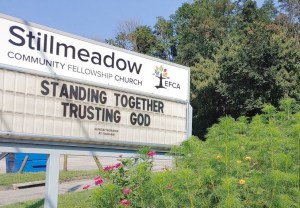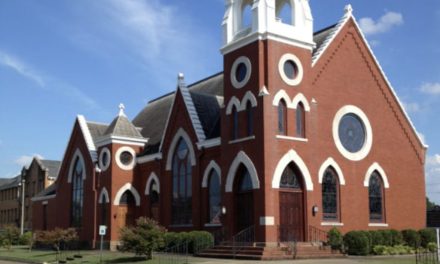
By Marnita Coleman,
Special to the AFRO
In a culture where childhood is defined for so many by electronic devices and video games played indoors, exposure to nature is limited to short walks from a building to a vehicle.
Too many of our children know too little about the natural world.
The generation at hand, in large part, knows little of climbing trees each week, watching ant hills swell in the dirt or examining the secret life of lightning bugs and their signals. For youth in West Baltimore, that’s where Stillmeadow PeacePark comes in.
“Environmental education is necessary for all human development,” says Terris Andre King II, founder and CEO of Temple X Schools.
King is one of the architects of the environmental education programming offered through Stillmeadow Community Fellowship’s Peace Park Learning Center and the Baltimore Forest School.
“There is a healing power to nature and environmental education serves as a liaison between mankind and the outside world,” King told the AFRO.
Nearly 50 years ago a way was found to forge— out of the 10-acre woods near his church—a place to reintroduce children to the world away from their screens.
Stillmeadow PeacePark, along Frederick Avenue in Southwest Baltimore, has been developed with walking paths, meditation stations and an apiary. The space is supported by churches, local organizations and government agencies.
When Pastor Michael Martin began conducting services at Stillmeadow in 2017, he began hearing references to the undeveloped ten acres adjacent to church property.
Now, he is actively working to move along the evolution of the Baltimore Resiliency Hub. It is one of seven sites partnered with Baltimore City to provide resources for low- and middle-income households to offer support with navigating the impact of major climate-related events. K
King said he views the pandemic as a “‘Cold War’ on Children’’ that reduced a child’s world to remote schooling through video-taught classes. He has dedicated himself to providing children with a chance to explore the world away from their screens. King spoke on the effect of what has been called a “nature-deficit disorder” to describe what happens when people spend more time indoors than out in nature. The list of effects include childhood obesity, diminished senses and attention difficulties.
In Baltimore, with the multitude of disparities, environmental injustices, and the lack of sacred spaces just for children to play, it is vital that we not only cultivate these spaces for them, but we advocate for children’s rights to play, to play in nature and to receive environmental education.
The result is a solid afterschool program in which two dozen students gather in what King describes as a space for “academic and homework support, forest stewardship, and community-based science engagements.”
The church campus programs include Bible discovery classes, the Byte Back Computer Foundations Courses; women’s workout classes, and the Baltimore Forest School. The latter is a Saturday program connecting young people to fine arts and technology through nature play.
At Stillmeadow, he said, they “receive a snack, put on rubber boots and engage in a nature walk. Students maintain their learning of the urban forest by cleaning up trash, mulching and planting trees.
“Once they return they spend time finishing homework, reading, or receiving one-on-one academic tutoring. Lastly, students engage in scientific procedures developed in collaboration with our lead Smithsonian Environmental Research Center, which includes soil sampling, pollinator identification and more,” he said.
He characterized the educational approach at the PeacePark as one focused “on activating the many ways humans can give back to the forest and all the forest gives to mankind. The grounding principle is stewardship”
He believes PeacePark is “the best classroom in the world to learn about urban ecology and engage in environmental justice. The environmental education program has been cultivated to not only tell a place[1]based story but also focus on solving real-world problems that arrive daily in the forest.”
As a result, he said, more community members are aware of an institution advocating for the needs of the people and Stillmeadow Community Fellowship is that organization. The word is being spread through the connection between PeacePark and the Baltimore Forest School.
The Baltimore Forest School launched in the summer of 2022 with a goal of “scaling the works taking place at Stillmeadow Community Projects (PeacePark) to other churches in underserved communities.” So far seven other faith leaders have joined the cause to underscore the role of the Black church in the creation of what he called “a sacred outdoor space made for a time like this to represent God’s will and protection over our future.”
For more information on Stillmeadow Community Church, log onto stillmeadow.community.
Marnita Coleman is an Owings Mills, Md.-based journalist, international music specialist, voice actor, and owner of Sought Out International.
The post Stillmeadow Peace Park: innovative environmental education at work appeared first on AFRO American Newspapers .











